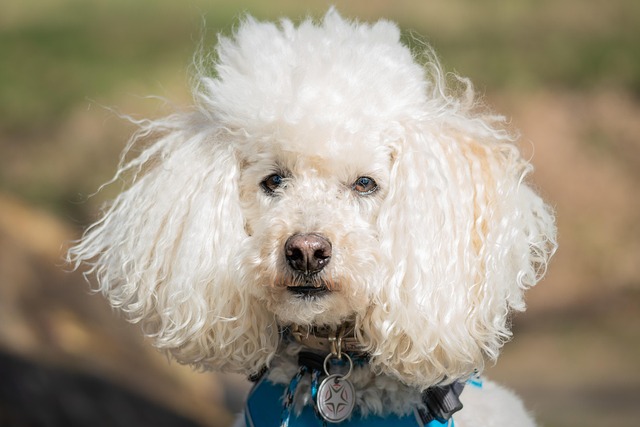
why does my dog jump on me from behind
It’s 7 a.m. in your Portland apartment, and you’re reaching for your coffee mug when suddenly, a warm body crashes into the back of your legs—your 10-month-old lab mix
That sinking feeling when your dog locks eyes with you across the park, hears your call, and then deliberately trots in the opposite direction is all too familiar for many owners. Traditional recall training often hits a wall because it focuses heavily on repetition and command compliance, overlooking the complex reasons a dog might choose disengagement. Distractions are powerful, certainly – squirrels, intriguing smells, other dogs. But frequently, the core issue runs deeper than mere environmental temptation. Dogs may associate coming when called with the abrupt end of enjoyable activities, or perhaps past experiences have made them wary. They might simply find whatever they're currently investigating far more rewarding than whatever predictable treat awaits them at your side. Recognizing these limitations of conventional obedience approaches is the first step toward a more effective solution.
Forget the outdated notion of dogs as robotic command-followers. Modern understanding of canine cognition emphasizes their emotional intelligence and social nature. The real breakthrough in reliable recall lies not in louder commands or better treats, but in cultivating a profound emotional connection. When your dog genuinely *wants* to be with you, sees you as their source of security, fun, and positive interaction, returning to your side becomes their preferred choice, not a begrudging obedience. This intrinsic motivation transforms the entire dynamic. Building this bond means prioritizing relationship over rules, focusing on becoming someone your dog actively seeks out because being near you feels consistently rewarding and safe. It shifts the focus from "how to get a dog to come to you" through force or bribery, to creating an environment where they *choose* to come.
Ironically, improving recall sometimes means temporarily stopping the recall training itself. Counterintuitive dog training techniques often yield the best results. Instead of endlessly practicing the "come" command in distracting environments and setting your dog up for failure, try this: become utterly fascinating. Sit quietly in the yard engrossed in a book, occasionally murmuring happy nonsense to yourself. Toss a piece of their kibble near them without making eye contact when they glance your way. Suddenly leave the room during play. These actions trigger canine curiosity – why is my human acting differently? Why aren't they demanding anything? This subtle shift makes your presence intriguing and unpredictable, naturally drawing them in to investigate. It leverages their innate curiosity rather than battling their resistance, building engagement without pressure. Studies on canine attention show dogs are significantly more responsive to individuals displaying calm, unpredictable positive behaviors than to those issuing constant directives.
Implementing empathy-based dog training methods requires patience and observation, not complex drills. Start small within your home. Dedicate several short sessions daily (just 3-5 minutes) to pure connection, free from commands. Sit on the floor. Observe your dog. If they approach, offer gentle affection *if* they solicit it, or simply acknowledge them with a soft, happy sigh. Notice what they enjoy – a particular scratch behind the ears, a quiet game of tug with a soft toy? Engage in *their* chosen activity without directing it. Take them on "sniffaris" – walks where they set the pace and direction, exploring scents at their leisure while you calmly observe. This builds massive goodwill. Gradually introduce recall opportunities only when success is almost guaranteed. Call them cheerfully from a few feet away when they are already looking at you, then immediately release them back to their activity. This reinforces that coming to you doesn't always mean the fun stops. Celebrate their approach with genuine enthusiasm, not just a treat. Pair the recall cue ("Come!" or a whistle) *only* when they are already moving towards you voluntarily, linking the word to the positive action they are already choosing. Consistency in these positive interactions, not in drilling commands, is key.
Setbacks are normal. If progress stalls, resist the urge to revert to loud commands or frustration. Ask yourself: Has the environment become too distracting too quickly? Have I unintentionally linked recall with negative outcomes lately (like ending a walk)? Has our bonding time decreased? Go back a step. Spend a few days focusing solely on rebuilding that positive emotional bank account through relaxed connection and play, without any recall attempts. If your dog regresses, calmly remove the distraction if possible (leaving the busy park) rather than chasing them. Chasing often becomes a thrilling game for them, reinforcing the *opposite* behavior you want. Remember, building trust takes time, especially if past experiences created hesitation. Maintaining progress means integrating connection into daily life, not just training sessions. Prioritize those quiet moments of companionship, respect their need for sniffing and exploration during walks, and keep interactions overwhelmingly positive. This ongoing investment in the relationship ensures that over time, understanding how to get a dog to come to you transforms from a training challenge into a natural expression of your shared bond.

It’s 7 a.m. in your Portland apartment, and you’re reaching for your coffee mug when suddenly, a warm body crashes into the back of your legs—your 10-month-old lab mix

Border collie puppies have jaws that move like little pincers—sharp, curious, and always ready to explore. That nipping isn't aggression; it's their way of learning about the world, teething, or burning off that endless energy they're famous for.

ay, and you’re sitting by the kitchen window in your Denver apartment, sipping coffee, when your 1-year-old Aussie mix, Bailey, bolts to the glass

It’s 11 p.m. in your Miami apartment, and the AC is cranked to 72°F, but your 3-year-old boxer, Diesel, is pacing the living room, barking sharply at the window.

It’s been three weeks since you brought home your 6-month-old rescue pup, Ruby—a scruffy terrier mix with a nose that never stops sniffing.

The question of when to begin obedience training often catches new dog owners off guard, especially when navigating the maze of puppy milestones and local regulations.